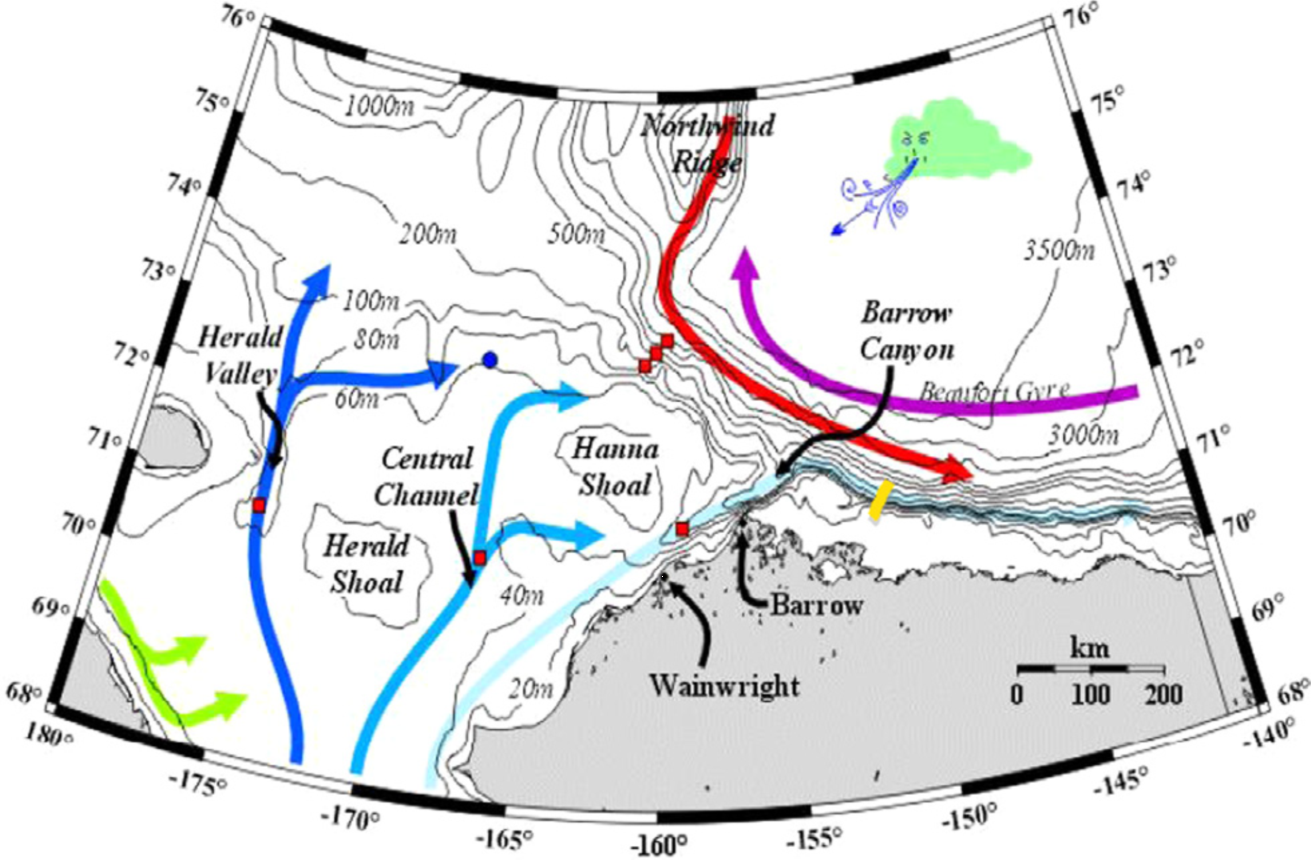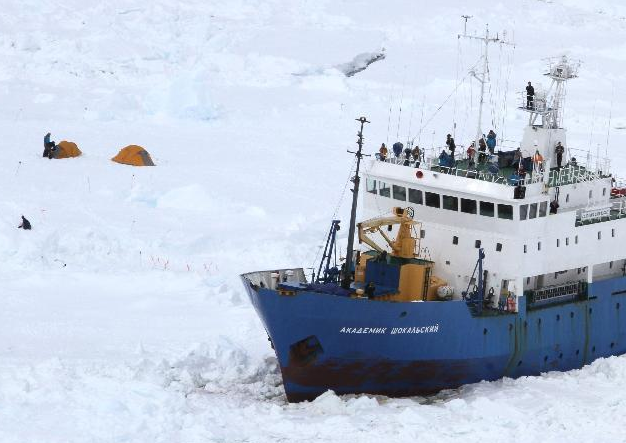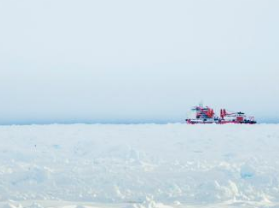



(Bai, Xuezhi(#)(*),Hu, Haoguo,Wang, Jia,Yu, Yanling,Cassano,Elizabeth,Maslanik, James,Responses of surface heat flux, sea ice and ocean dynamics in the Chukchi-Beaufort sea to storm passages during winter 2006/2007:A numerical study,Deep-Sea Research Part I: Oceanographic ResearchPapers,2015,102:101-117。)
This study investigates storm impacts on sea ice, oceanic dynamics, and surface heat flux in the Chukchi–Beaufort Seas using a coupled ice–ocean model (CIOM). Two types of storms affect the study area: Arctic-born cyclones and north-moving Aleutian lows, which lead to strong westerly and easterly winds, respectively. Driven by 6-hourly forcing, the CIOM successfully reproduced the storm impacts. Simulated sea ice movements are comparable to the satellite observations. Storms usually result in fast-moving ice, which is faster than the speed of the surface water, and the gap between sea ice and surface water speed increases with wind speed. Storms can alter the pathways of the Pacific inflow water: with westerly winds, the Pacific inflow water goes no further than the latitude of Wrangel Island, while with easterly winds the Pacific inflow water can flow northward into the interior Arctic basin. Strong easterly winds associated with north-moving Aleutian lows reverse the Alaskan Coastal Current and the Bering Slope Current, and induce upwelling along the north Alaska coast. Westerly winds associated with Arctic-born cyclones act in an opposite way. During the storms, heat loss to the atmosphere is about twice that of normal conditions, which is mainly attributed to increases of the sensible and latent heat fluxes over the open water. Heat loss over ice was quite stable with some small fluctuations in response to the storms.

Fig. 1. A schematic diagram for coastal circulation in the Chukchi–Beaufort Seas: Alaskan Coast Current with the origin of freshwater (light blue); Central Branch Current (medium blue);Herald Canyon Branch (dark blue);Slope Current (red); Beaufort Gyre (purple); East Siberian Current (green). Depths are in meters (Courtesy of Tom Weingartner). The mooring locations of the SBI array are indicated (yellow).
(Zhaomin Wang, John Turner, Bo Sun, Bingrui Li & Chengyan Liu (2014),Cyclone-induced rapid creation of extreme Antarctic sea ice conditions,Scientific Reports 4, 5317;doi:10.1038/srep05317)
Two polar vessels, AkademikShokalskiy and Xuelong, were trapped by thick sea ice in the Antarctic coastal region just to the west of 144oE and between 66.5oS and 67oS in late December 2013. This event demonstrated the rapid establishment of extreme Antarctic sea ice conditions on synoptic time scales. The event was associated with cyclones that developed at lower latitudes. Near the event site, cyclone-enhanced strong southeasterly katabatic winds drove large westward drifts of ice floes. In addition, the cyclones also gave southward ice drift. The arrival and grounding of Iceberg B9B in Commonwealth Bay in March 2011 led to the growth of fast ice around it, forming a northward protruding barrier. This barrier blocked the westward ice drift and hence aided sea ice consolidation on its eastern side. Similar cyclone-induced events have occurred at this site in the past after the grounding of Iceberg B9B. Future events may be predictable on synoptic time scales, if cyclone-induced strong wind events can be predicted.


© 2014 Mokaine. All Rights Reserved.More Templates - Collect from
Lorem ipsum dolor sit amet, consectetur adipisicing elit, sed do eiusmod.